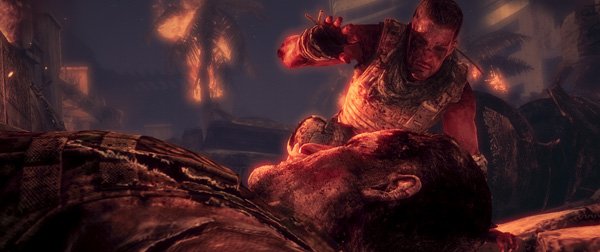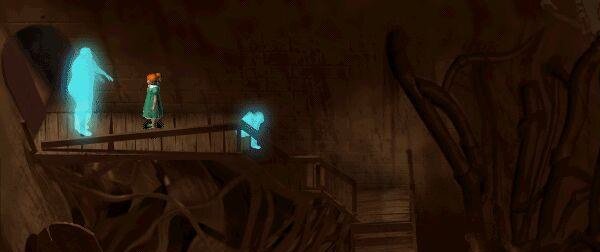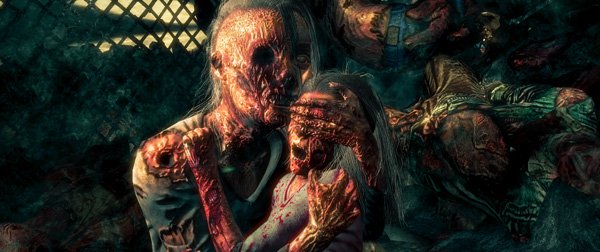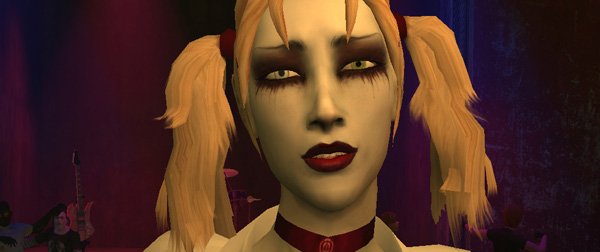Fragging Bambi's Mum: Photo-realism and the misguided quest for more emotional games

In an interview over on GamesIndustry.biz (currently not published in its entirety, so just to be fair, there may be additional information that adds context to this), 2K boss Christoph Hartmann talks about the need for games to become photo-realistic. Not simply for its own sake though, as a visual marker of technology. No, because without such technology, we apparently won't be able to get new genres, or any real emotion from the ones we already have. Here's the relevant snippet from the site.
"It will be very hard to create very deep emotions like sadness or love, things that drive the movies," he said. "Until games are photorealistic, it'll be very hard to open up to new genres. We can really only focus on action and shooter titles; those are suitable for consoles now."
He's certainly not the first person to say this over the years, and he won't be the last - and this isn't intended to be a hatchet piece about someone saying something silly in a much longer interview. It is however an example of a commonly held position that's not simply wrong, but that actively hurts the drive for realism and in-game humanity by missing the point of what makes us laugh and cry.

The argument about genres can easily be summed up in one word: No. Photo-realism is no automatic boon to anything not intended to be set in a realistic world. Better graphics are something to strive for, sure, but every genre that exists got its start without photo-realism, and while many of them obviously benefit from visual improvements over time, cool new experiences are always popping up without that crutch. This is a non-discussion. The answer is no. End of story. No. No. Thrice: No. If you believe that, even a little, you have no imagination or understanding of just how awesome gaming is.
When it comes to the emotional side though, things get much more interesting - not for what needs to be done, but for what already happens. There are certainly games like 2K's own Spec Ops where modern graphics play an important part - walking through the carnage of a mortar strike for instance wouldn't work anything like as well if it was a few splattery sprites instead of, say, this:

It's not however usually the graphical fidelity that makes a moment emotional, but the combination of concept and response. It doesn't matter if it's 'realistic' as long as we're sufficiently swept away by the moment to consider it real. When Bambi's mother is shot, we don't see ink and paint; we see loss and confusion, desperation and emptiness. To use a later Disney movie, Jessie's heartbreaking song in Toy Story 2 works regardless of the fact that she's both a 3D model and within her own universe, a doll - the emotional descent from happiness to the cruel moment that sense of belonging is just snatched away is something that can resonate with us just as well as anything else. Or, proving that it can go both ways in the same scene, how about the opening of Up and its amazing adult life montage?
It's no surprise that animation tends to do these moments so well. While realistic to a certain point, the real magic is in control ; animators and voice actors alike can focus so tightly on the details like the glimmer of a tear in an eye, or take things grander with the understanding that we won't object to something like a character having expressive almond eyes that we'd find creepy as hell if applied to an actor.
The biggest gaming news, reviews and hardware deals
Keep up to date with the most important stories and the best deals, as picked by the PC Gamer team.
Just as importantly, because the visual experience is inherently divorced from reality, we're not subconsciously looking for problems - in any way. In most cases, we don't even have a mental line - nobody thinks of "Pixar's Wall-E" in the same way we subconsciously see "Christian Bale's Batman." We just accept the fictional construct and embrace it for what it is - the only real exceptions being when the reality intrudes with something like a celebrity voiceover so that we're constantly reminded that we're just watching Will Smith bop around the screen as a fish or whatever.
(And of course, the more realistic things get, the greater the chance of problems emerging. LA Noire for instance offered phenomenal facial animation, but its character work - while far from great - constantly jarred by being not... quite.... right. This is usually referred to as the "Uncanny Valley" effect - that in getting close, but not close enough, our response becomes one of revulsion/distance rather than acceptance. It's not hard to think of examples from film or games.)

Games have far more in common with animation than they do film, but with an important extra element - we're not simply passive observers. We get far, far more time to get to like and empathise with the characters, even over a relatively short 10 hour game, as well as being the instigators of the events that spark powerful emotions - love, happiness, pain, betrayal, the fear of not belonging, whatever.
If those emotions are tied to realistic characters, as in (apologies, but it's the highest profile recent example) the PS3 game Heavy Rain, then that's great. The work just as well though with Psychonauts' Raz realising his father loved him all along (not to mention many smaller details, like discovering seemingly happy-go-lucky teacher Milla's hidden pain in one of the most startling secret rooms ever), the scene in Sanitarium where a ghost girl walks through the devastated family her death has left behind, or many, many, many other examples from games cartoonish, grounded, dramatic - or even outright comedic. Comedy after all is the genre that really knows the value of an emotional sucker punch. If it can make you laugh, it can make you cry. Two words: Jurassic Bark. Sob.
(And this is only if we're talking about things with a foot planted in a desire to even be vaguely realistic. There's many an effective art game out there that finds emotion by different routes entirely.)
In short, photo-realism is a perfectly fine thing to aim for, but as far as emotions go, it's just a shell like any other - a creative choice, not an end-goal. Emotions themselves are always going to be inside it, and powerful enough to breathe life into anything from a real person with carefully modelled sweat on their brow, to the unexpected death of a cartoon rabbit . Why, with the right writing, character design, and concepts, a good designer can even make us feel sympathy for a coloured rectangle.
Maybe there's even a few new genres somewhere in that. Stranger things have happened...

